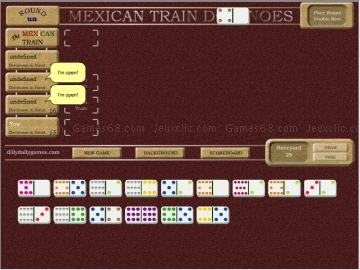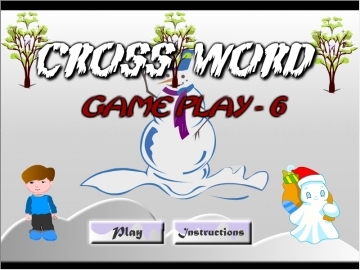Games |
- IJMS, Vol. 12, Pages 3303-3321: Nanomedicine: Application Areas and Development Prospects
- Diversity, Vol. 3, Pages 235-251: Invasion Age and Invader Removal Alter Species Cover and Composition at the Suisun Tidal Marsh, California, USA
- JLPEA, Vol. 1, Pages 219-246: Low Power Clock Network Design
- Game Fairy sabrina : 19/05/2011
- Game Divine Intervention : 19/05/2011
- Game Commander cookie : 19/05/2011
- Game 9 dragons charm : 19/05/2011
- Game Snake : 19/05/2011
- Game Hairdresser : 19/05/2011
- Game Mex train dominoes : 19/05/2011
- Game Magic And Tactic : 19/05/2011
- Game Red beard : 19/05/2011
- Game The bullet : 19/05/2011
- Game Flower Chain Reaction : 19/05/2011
- Game Ben 10 total battle : 19/05/2011
- Game Replicat : 19/05/2011
- Game Chippy : 19/05/2011
- Game Spin doctor : 19/05/2011
- Game Crossword game play 6 : 19/05/2011
- Game Super stacker : 19/05/2011
| IJMS, Vol. 12, Pages 3303-3321: Nanomedicine: Application Areas and Development Prospects Posted: 19 May 2011 12:00 AM PDT Nanotechnology, along with related concepts such as nanomaterials, nanostructures and nanoparticles, has become a priority area for scientific research and technological development. Nanotechnology, i.e., the creation and utilization of materials and devices at nanometer scale, already has multiple applications in electronics and other fields. However, the greatest expectations are for its application in biotechnology and health, with the direct impact these could have on the quality of health in future societies. The emerging discipline of nanomedicine brings nanotechnology and medicine together in order to develop novel therapies and improve existing treatments. In nanomedicine, atoms and molecules are manipulated to produce nanostructures of the same size as biomolecules for interaction with human cells. This procedure offers a range of new solutions for diagnoses and "smart" treatments by stimulating the body's own repair mechanisms. It will enhance the early diagnosis and treatment of diseases such as cancer, diabetes, Alzheimer's, Parkinson's and cardiovascular diseases. Preventive medicine may then become a reality. |
| Posted: 19 May 2011 12:00 AM PDT Wetland ecosystems are vulnerable to plant species invasions, which can greatly alter species composition and ecosystem functioning. The response of these communities to restoration can vary following invader removal, but few studies have evaluated how recent and long-term invasions can affect the plant community's restoration potential. Perennial pepperweed (Lepidium latifolium) has invaded thousands of hectares of marshland in the San Francisco Estuary, California, United States of America, while the effects of invasion and removal of this weed remain poorly studied. In this study, perennial pepperweed was removed along a gradient of invasion age in brackish tidal marshes of Suisun Marsh, within the Estuary. In removal plots, resident plant cover significantly increased during the 2-year study period, particularly in the densest and oldest parts of the perennial pepperweed colonies, while species richness did not change significantly. In bare areas created by removal of perennial pepperweed, recolonization was dominated by three-square bulrush (Schoenoplectus americanus). Ultimately, removal of invasive perennial pepperweed led to reinvasion of the resident plant community within two years. This study illustrates that it is important to consider invasion age, along with exotic species removal, when developing a restoration strategy in wetland ecosystems. |
| JLPEA, Vol. 1, Pages 219-246: Low Power Clock Network Design Posted: 19 May 2011 12:00 AM PDT Power is a primary concern in modern circuits. Clock distribution networks, in particular, are an essential element of a synchronous digital circuit and a significant power consumer. Clock distribution networks are subject to clock skew due to process, voltage, and temperature (PVT) variations and load imbalances. A target skew between sequentially-adjacent registers can be obtained in a balanced low power clock tree using techniques such as buffer and wire sizing. Existing skew mitigation techniques in tree-based clock distribution networks, however, are not efficient in coping with post design variations; whereas the latest non-tree mesh-based solutions reliably handle skew variations, albeit with a significant increase in dissipated power. Alternatively, crosslink-based methods provide low power and variation-efficient skew solutions. Existing crosslink-based methods, however, only address skew at the network topology level and do not target low power consumption. Different methods to manage skew and skew variations within tree and non-tree clock distribution networks are reviewed and compared in this paper. Guidelines for inserting crosslinks within a buffered low power clock tree are provided. Metrics to determine the most power efficient technique for a given circuit are discussed and verified with simulation. |
| Game Fairy sabrina : 19/05/2011 Posted: 04 Jan 2011 04:05 PM PST |
| Game Divine Intervention : 19/05/2011 Posted: 04 Jan 2011 04:05 PM PST |
| Game Commander cookie : 19/05/2011 Posted: 04 Jan 2011 04:00 PM PST |
| Game 9 dragons charm : 19/05/2011 Posted: 04 Jan 2011 04:04 PM PST |
| Posted: 04 Jan 2011 04:07 PM PST |
| Posted: 04 Jan 2011 04:04 PM PST |
| Game Mex train dominoes : 19/05/2011 Posted: 04 Jan 2011 04:00 PM PST |
| Game Magic And Tactic : 19/05/2011 Posted: 04 Jan 2011 05:00 PM PST |
| Posted: 04 Jan 2011 04:07 PM PST |
| Posted: 04 Jan 2011 04:03 PM PST |
| Game Flower Chain Reaction : 19/05/2011 Posted: 04 Jan 2011 04:03 PM PST |
| Game Ben 10 total battle : 19/05/2011 Posted: 04 Jan 2011 04:00 PM PST |
| Posted: 04 Jan 2011 04:05 PM PST |
| Posted: 04 Jan 2011 04:06 PM PST |
| Posted: 04 Jan 2011 04:08 PM PST |
| Game Crossword game play 6 : 19/05/2011 Posted: 04 Jan 2011 04:04 PM PST |
| Game Super stacker : 19/05/2011 Posted: 04 Jan 2011 04:09 PM PST |
| You are subscribed to email updates from Games To stop receiving these emails, you may unsubscribe now. | Email delivery powered by Google |
| Google Inc., 20 West Kinzie, Chicago IL USA 60610 | |


















Комментариев нет:
Отправить комментарий